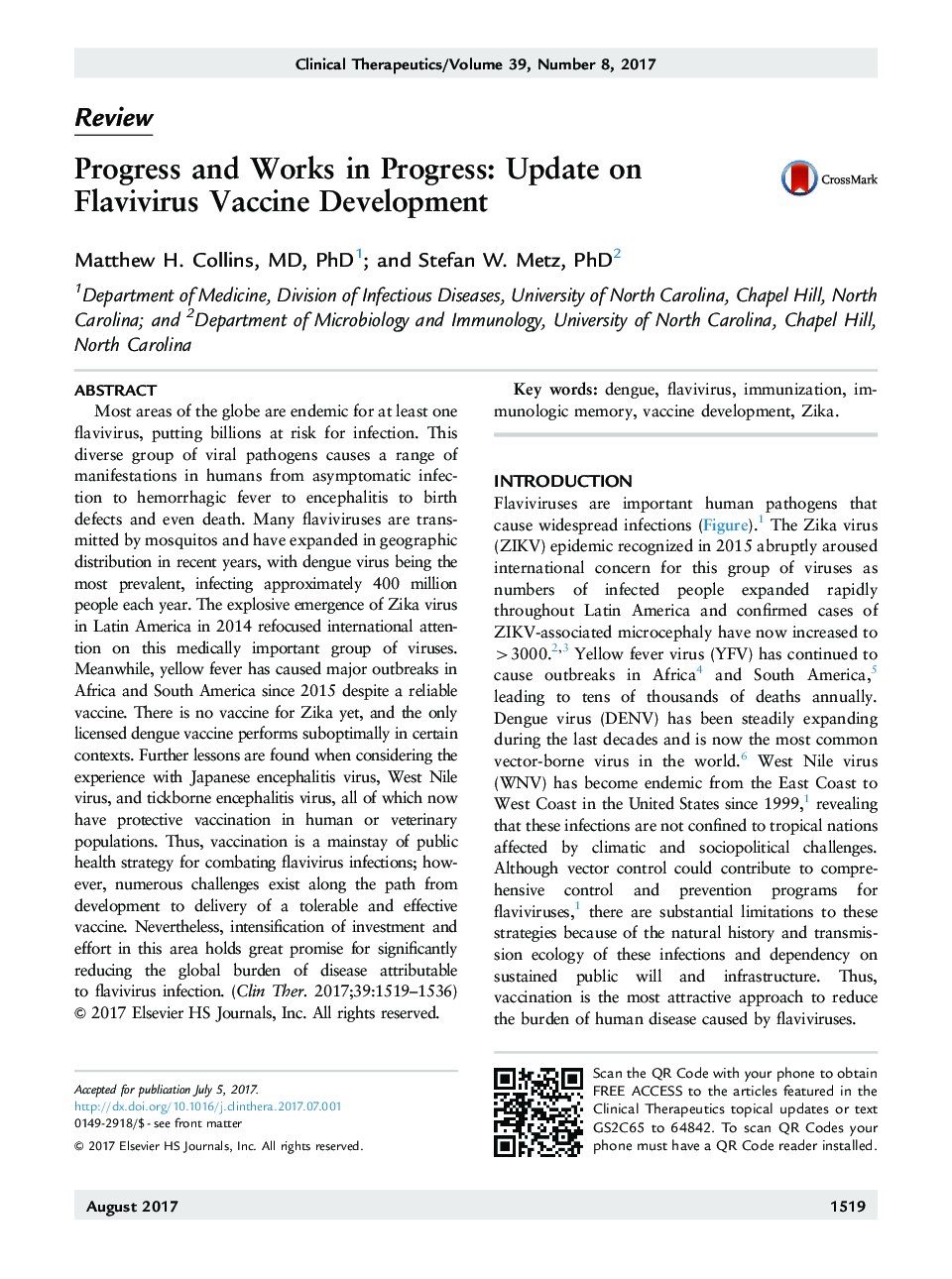| Article ID | Journal | Published Year | Pages | File Type |
|---|---|---|---|---|
| 5553738 | Clinical Therapeutics | 2017 | 18 Pages |
Most areas of the globe are endemic for at least one flavivirus, putting billions at risk for infection. This diverse group of viral pathogens causes a range of manifestations in humans from asymptomatic infection to hemorrhagic fever to encephalitis to birth defects and even death. Many flaviviruses are transmitted by mosquitos and have expanded in geographic distribution in recent years, with dengue virus being the most prevalent, infecting approximately 400 million people each year. The explosive emergence of Zika virus in Latin America in 2014 refocused international attention on this medically important group of viruses. Meanwhile, yellow fever has caused major outbreaks in Africa and South America since 2015 despite a reliable vaccine. There is no vaccine for Zika yet, and the only licensed dengue vaccine performs suboptimally in certain contexts. Further lessons are found when considering the experience with Japanese encephalitis virus, West Nile virus, and tickborne encephalitis virus, all of which now have protective vaccination in human or veterinary populations. Thus, vaccination is a mainstay of public health strategy for combating flavivirus infections; however, numerous challenges exist along the path from development to delivery of a tolerable and effective vaccine. Nevertheless, intensification of investment and effort in this area holds great promise for significantly reducing the global burden of disease attributable to flavivirus infection.
